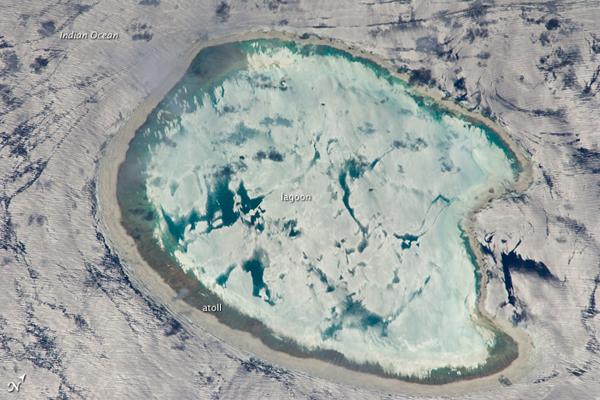
Sun Glints off Ocean in Spectacular Astronaut Photo

The vantage point of the International Space Station as it orbits 220 miles (354 kilometers) above the Earth provides astronauts with unique views of the globe. Every so often, those views become stunning. [Related: Stunning Space Photos from Astronaut Paolo Nespoli]
This photograph of the Bassas da India, an uninhabited atoll in the Indian Ocean, has an almost surreal quality due to varying degrees of sunglint.
Sunglint can be created by variations in the roughness of a water surface, essentially the presence or absence of waves generated by winds or currents. Oil and other surfactants can also change the reflective properties of the water's surface and cause sunglint. This type of sunglint could be seen in images of the oil spill in the Gulf of Mexico that began a year ago Wednesday (April 20).
In this image, the presence of currents is highlighted as darker patches or streaks (image left and upper right). In contrast, shallow water in the lagoon presents a more uniform, mirror-like appearance, suggesting that there are no subsurface currents.
Located between the Mozambique coast of Africa and the island of Madagascar , Bassas da India is part of the French Southern and Antarctic Lands. It is uninhabited because it is completely submerged at high tide; there is no vegetation on the atoll for the same reason.
The atoll is a volcanic rock surrounded by coral reefs and is approximately 6 miles (10 kilometers) in diameter, and covers an area (including the lagoon) of approximately 31 square miles (80 square km). It has been a French possession since 1897, according the CIA World Factbook.
Get the world’s most fascinating discoveries delivered straight to your inbox.



